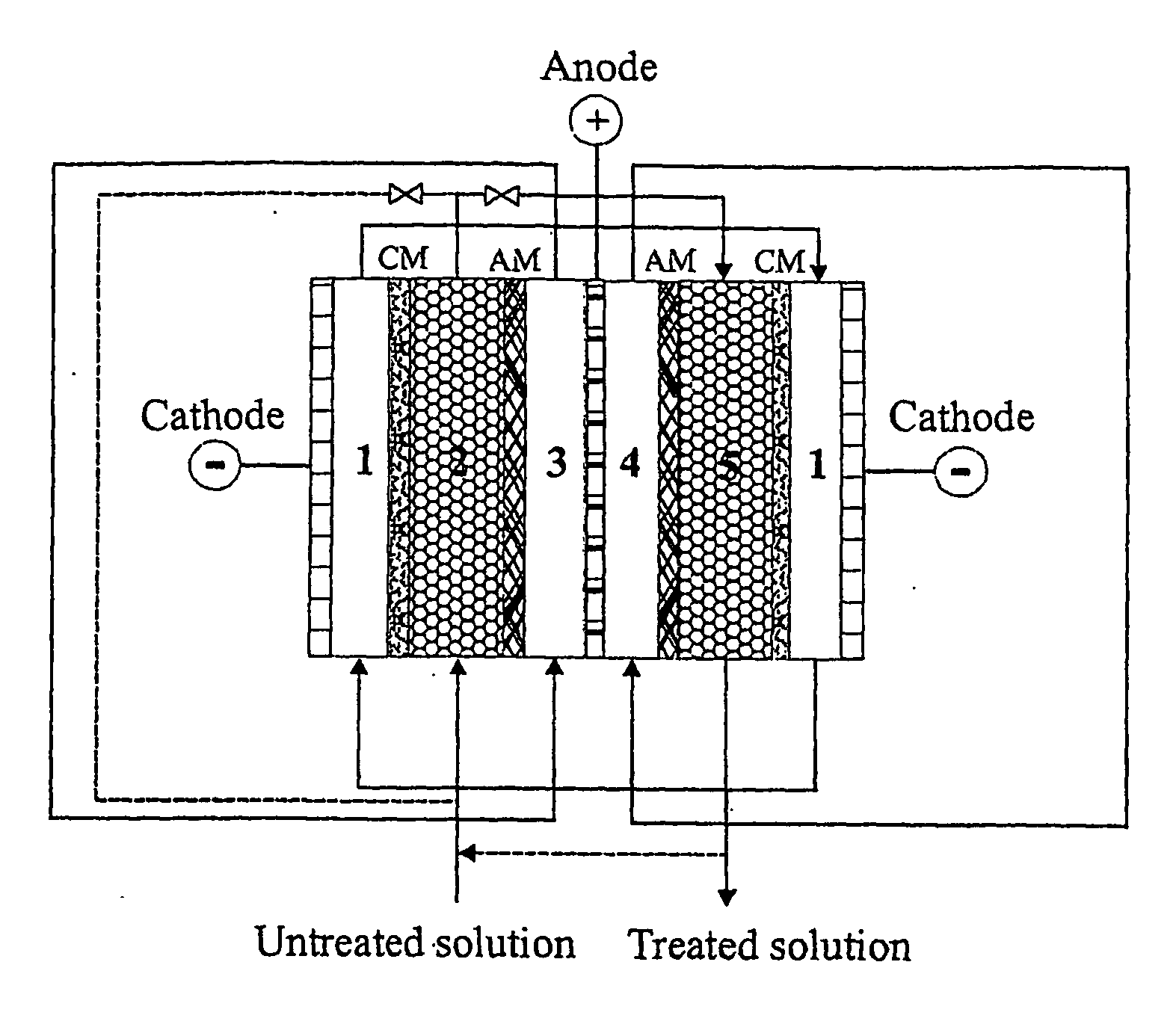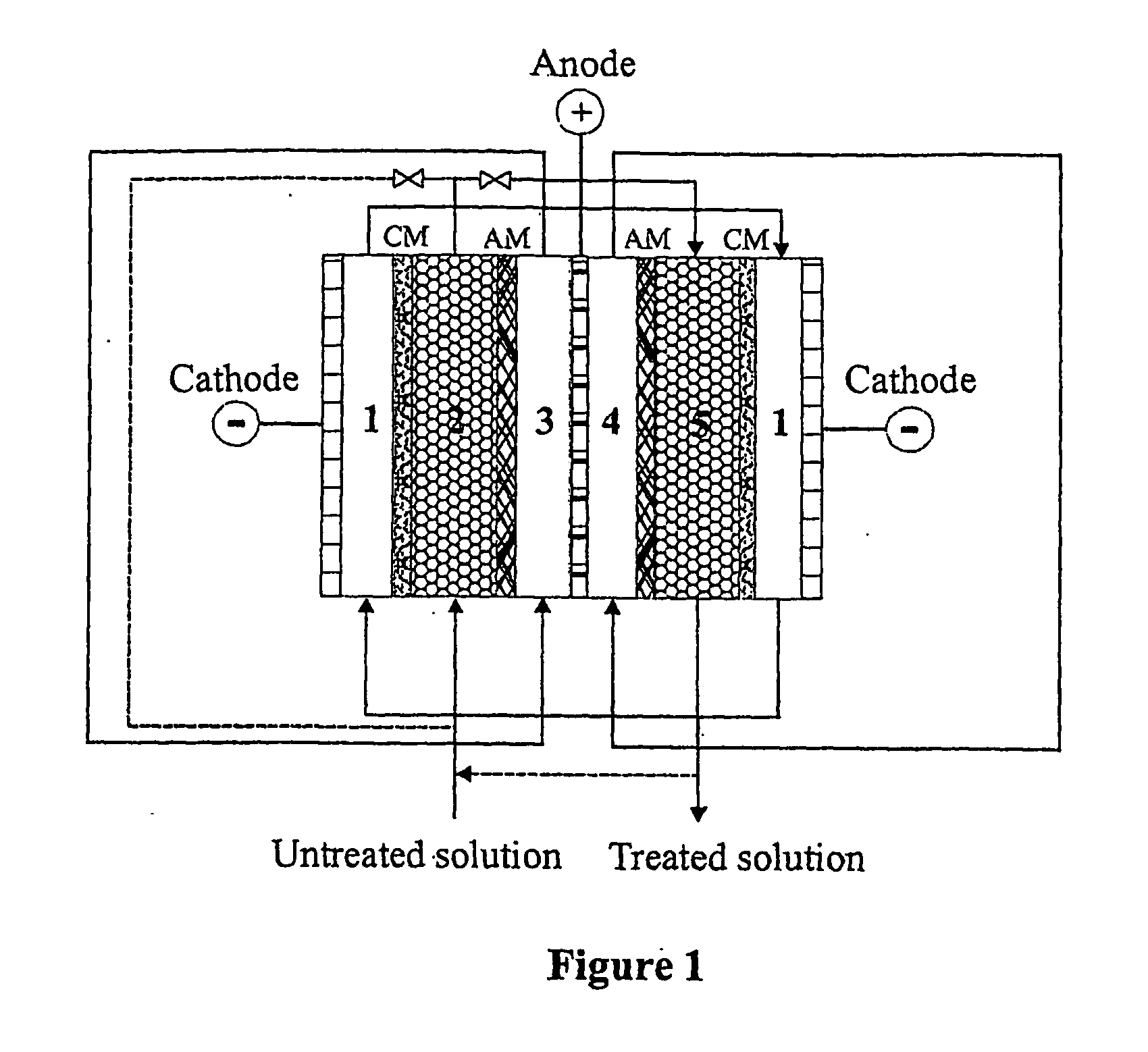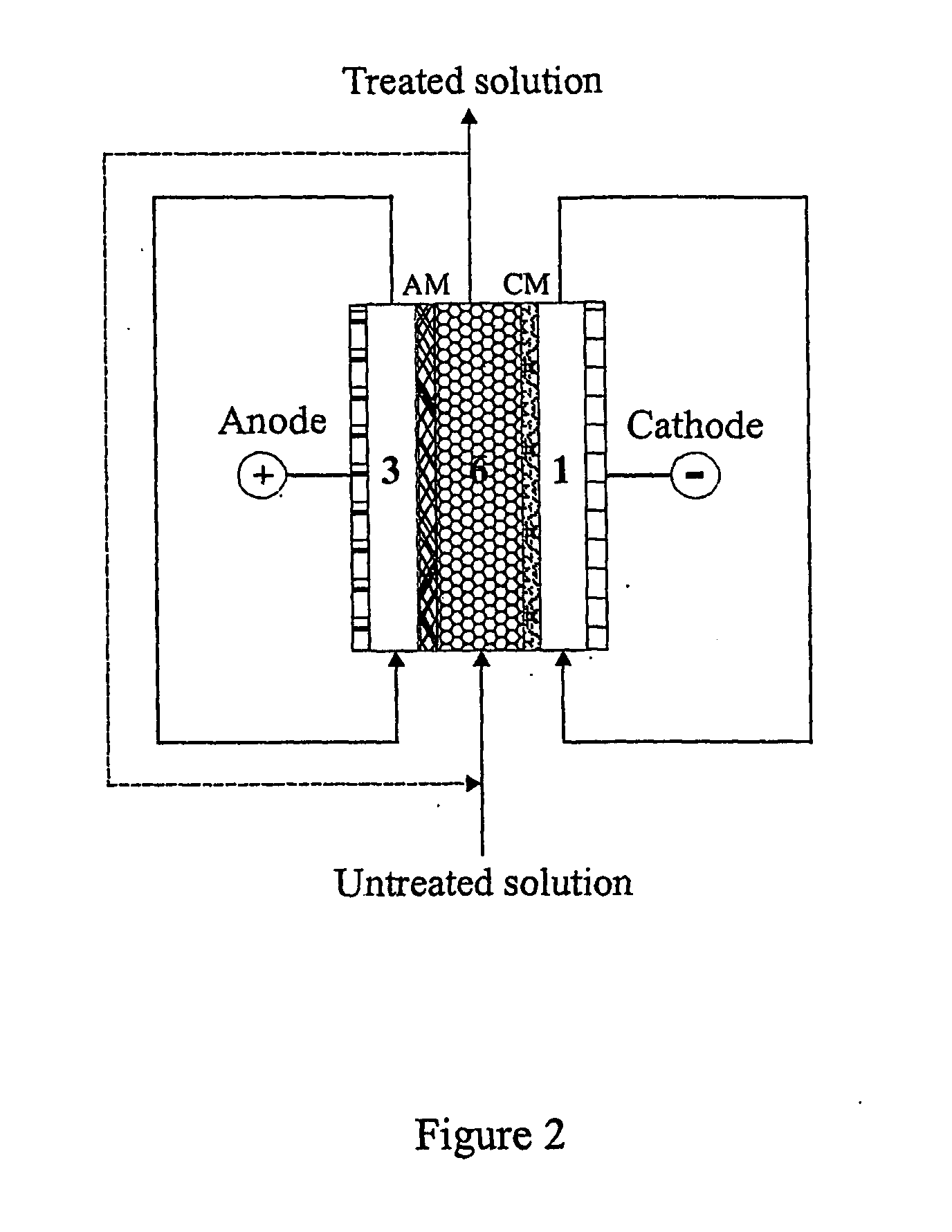Boron separation and recovery
- Summary
- Abstract
- Description
- Claims
- Application Information
AI Technical Summary
Benefits of technology
Problems solved by technology
Method used
Image
Examples
example 1
Separation of Boric Acid from Strongly Dissociated Anions
[0050] This example demonstrates the weakly dissociated boric acid was separated from strongly dissociated anions such as chloride, nitrate and sulfate. The separation can be carried out in the diluted compartment filled with cation-exchange resin in which both strongly dissociated anions and cations can be separated from the solution, and the most of weakly dissociated boric acid cannot be separated. The separation and recovery of boric acid can be performed in the following diluted compartment filled with anion resin or cation / anion resins. In order to minimise the electrochemical dissociation of boric acid, the density of DC current should be controlled as low as possible. The results in Table 4 indicate that boric acid was well separated from nitrate and sulfate. Lowing the DC current could minimise the electrochemical dissociation of boric acid. It was also shown that the separation of nitrate and sulfate was not signif...
example 2
Separation of Boron from Lithium using Mixed Anion and Cation Resins Filled in the Diluted Compartment
[0051] The process of boron separation from lithium is demonstrated using mixed resin bed filled in the diluted compartment. As shown in Table 5, boric acid was well separated and recovered by the process. The separation efficiency for both boron and lithium was above 99%. The initial boron concentration of around 2000 ppm could be reduced to less than 5 ppm. The initial lithium concentration of around 5 ppm could be reduced to less than 10 ppb. The lithium concentration in the separated boron solution (anolyte) was less than 20 ppb. This indicated that the selectivity of the separation and the purity of the recovered boron are quite high.
TABLE 5The efficiency of boron separation from lithiumusing a mixed resin bed in diluted compartment*BoronLithiumSeparationInitial conc.Final conc.SeparationInitial conc.Final conc.Test No.%ppmppm%ppbppb1**99.72000599.836008299.72019799.8485011...
example 3
Separation of Boron from Lithium Using Anion and Cation Resins Separated in the Diluted Compartment
[0052] The process of boron separation from lithium is demonstrated using the anion resin was separated from the cation resin in the diluted compartment. As shown in Table 6, boric acid was well separated and recovered using a separated resin bed. Although the separation efficiency for both boron and lithium is similar to the separation process using the mixed resin bed, it has been found that the electric resistance of the system was lower than using the mixed resin bed. Therefore a high density of DC current should be achieved more easily in a system with separated resin bed than in a system with mixed resin bed.
TABLE 6The efficiency of boron separation from lithiumusing a mixed resin bed in diluted compartment*BoronLithiumSeparationInitial conc.Final conc.SeparationInitial conc.Final conc.Test No.%ppmppm%ppbppb199.92000299.950302299.3200014———
Notes:
*The cation resin C-400 was f...
PUM
| Property | Measurement | Unit |
|---|---|---|
| Fraction | aaaaa | aaaaa |
| Fraction | aaaaa | aaaaa |
| Fraction | aaaaa | aaaaa |
Abstract
Description
Claims
Application Information
 Login to View More
Login to View More - R&D
- Intellectual Property
- Life Sciences
- Materials
- Tech Scout
- Unparalleled Data Quality
- Higher Quality Content
- 60% Fewer Hallucinations
Browse by: Latest US Patents, China's latest patents, Technical Efficacy Thesaurus, Application Domain, Technology Topic, Popular Technical Reports.
© 2025 PatSnap. All rights reserved.Legal|Privacy policy|Modern Slavery Act Transparency Statement|Sitemap|About US| Contact US: help@patsnap.com



